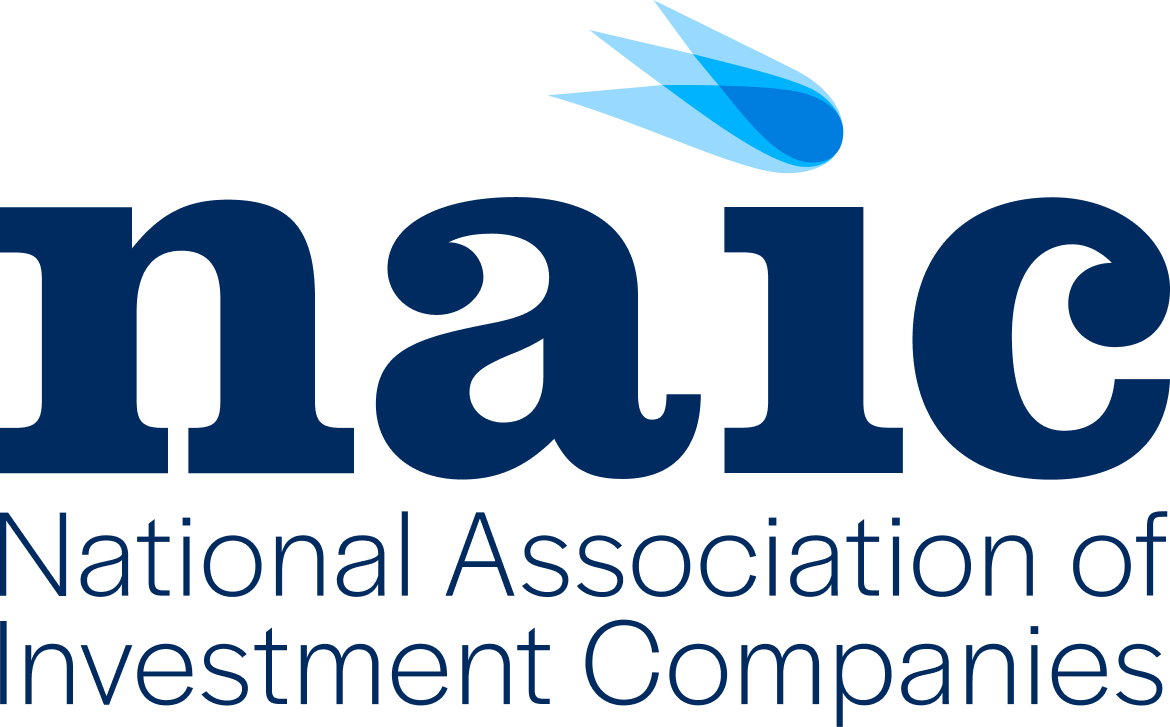Examining the Returns 2023
Further Evidence of Diverse-Owned
Private Equity Firm Outperformance
A Letter from the NAIC
Dear Friends and Colleagues,
The business environment over the past year has been — to put it mildly — less than ideal. Despite the myriad challenges diverse asset managers have faced, they continue to exceed expectations. On behalf of the Board of Directors and members of the National Association of Investment Companies, I am pleased to announce that the findings from our 2023 performance report, “Examining the Returns,” confirm and quantify that attestation.
This biennial report, compiled with assistance from KPMG to ensure objectivity and the confidentiality of all individual firm’s data, is a critical component of the central thesis that diverse-owned private equity firms produce significant investment returns. NAIC uses this report in our ongoing efforts to educate the broader marketplace that investing with diverse managers does not require compromising returns. It is the industry’s only comprehensive study quantifying the performance of diverse-owned private equity firms.
In reviewing this report, you will see that diverse-owned managers — represented by the NAIC Private Equity Index — significantly outperformed the BURGISS benchmark median return, recording a net IRR of 17.23 percent, a net TVPI of 1.68x and DPI of 0.66x compared with BURGISS median performance of 11.58 percent, 1.37x and 0.44x, respectively. Roughly 31 percent of the funds in the NAIC Private Equity Index produced top quartile net IRRs during the period studied. Further, the NAIC Private Equity Index generated an IRR in the first or second quartile 72.2 percent of the time and posted a TVPI and DPI in the first or second quartile approximately 83 percent of the time.
These results are not just a one-off. Past performance studies demonstrate a consistent track record of measurably strong performances. Yet despite superior results, many institutions remain reluctant to meaningfully allocate capital to diverse managers, which collectively manage less than 2% of the industry’s total assets. Compounding matters, there are those who actively work to ensure the inequities continue by challenging ESG and DEI initiatives. The pushback against inclusivity efforts in an industry that has historically excluded women and professionals of color is why NAIC’s advocacy and this performance report are so crucial.
Simply put, investing with diverse managers adds significant value to portfolios and drives stronger returns. Studies such as this continue to spotlight the talent in the diverse investment manager marketplace and demonstrate that investing in diverse managers does not detract from fiduciary duty or the ability to generate superior returns. As the financial services industry evolves, embracing inclusivity becomes not just a moral imperative but a strategic and fiduciary necessity.
Best regards,

Robert L. Greene
NAIC President & CEO
**PAST PERFORMANCE IS NO GUARANTEE OF FUTURE RESULTS. All opinions referenced are as of the date of publication and are subject to change due to changes in the market or economic conditions and may not necessarily come to pass. Information contained herein is for informational purposes and should not be considered investment advice.**
Introduction
The last twelve to twenty-four months has been a tale of three data trends when it comes to diversity in the United States. While loud criticism and an abundance of activity in statehouses and courthouses around the country has garnered the most attention, the actual diversity landscape is considerably more nuanced.
Demographics
Based on information gathered during the 2020 United States Census, it has become increasingly clear that the population is diversifying faster than anticipated, particularly within younger demographic groups. Looking at the early 2020 Census data, the Brookings Institute identified that while 40 percent of the U.S. total population was diverse as of 2019 (up from 30 percent two decades ago), for those under age 16, the population is essentially balanced.1 Looking at the Census Bureau’s Diversity Index (DI) tells a similar story. The DI was built to identify the statistical likelihood that two individuals, chosen at random from the U.S. population, will be from different racial and ethnic groups. Based on that index, in 2020 two randomly chosen individuals had a 61.1 percent chance of being from different racial and ethnic groups, a more than six percentage point jump since the 2010 census.2
Figure 1: Race-Ethnic Profile for Total US and Under Age 16 Populations
Total US Population
Under Age 16
- White*
- Black*
- American Indian, Alaska Native*
- Asian American**
- 2+ and other races*
- Latino or Hispanic
*Members of race group who do not identify as Latino or Hispanic
**Non-Latino or Hispanic Asians, Hawaiians and other Pacific Islanders
Source: Brookings Institute Metropolitan Policy Program
Figure 2: Percentage Distribution of Population in the United States in 2016 and 2060, by Race and Hispanic Origin
*Projection
Source: Statista
The Impact of Diversity on Business and Investing
There are a number of potential impacts from the demographic changes highlighted above. Perhaps the most intriguing for the financial services and investment industries is the potential for increasing corporate performance and investment returns in both public and private markets. Indeed, since the NAIC’s last study in 2021, research has continued to emerge that highlights the positive pecuniary impact of diversity on financial results.
From the standpoint of corporate financial performance, in March 2023 Morgan Stanley updated their Holistic Equal Representation Score, or HERS index, which looks at companies based on gender diversity. Companies with greater gender diversity are assigned a higher HERS score. After examining 1,875 firms from the MSCI World Index, Morgan Stanley found that firms with higher HERS scores outperformed their less gender diverse counterparts. 4 And what’s more, financial services firms were one of the sectors where this phenomenon was most pronounced, with share prices for the more gender diverse financial companies globally 8.3 percent higher than their less diverse counterparts.5 As an aside, NAIC member organizations encompass 46 female-owned firms.6
Figure 3: Performance of Firms Based on Morgan Stanley’s HERS Index
A business unit of Morgan Stanley, Calvert, further studied whether racial and ethnic board diversity plays a role in stock price. After analyzing 800 companies in the U.S., U.K, Canada and Australia between 2012 and 2020, the 2022 study found that “using racial and ethnic board diversity factors can improve U.S. large-cap equity stock selection.”7 For U.S. companies, return differentials varied by 1.5 percent or more when looking at the differential between the most and least diverse firms.8 And while public companies worldwide continue to struggle with board diversity, it is interesting to note that private equity-backed firms boast 45% diverse directors.9
When moving from large cap companies to start ups, diversity dividend data is equally compelling. According to a 2023 paper from McKinsey and Company, despite being funded at levels less than half (43 percent) of their white male counterparts, founders with greater racial, ethnic and gender diversity achieved 30 percent higher returns for their investors at exit.10 And one of the key factors that influences lower funding rates for diverse founders? Per the McKinsey study, this bias is directly impacted by whether the founder’s gender or ethnic background matched that of the funder.11
It is no secret that private equity sponsors will have and influence seats on a company’s board of directors. They also will be instrumental in C-suite hiring decisions. It also shouldn’t be a surprise by now that the investment industry continues to lag when it comes to diversity. For example, a 2023 study found that “[a]t diversity [private markets] leaders, 32 percent of MDs are women and 32 percent of MDs are ethnic and racial minorities. Diversity laggards have no women and 2 percent ethnic and racial minorities at the MD level.” 12
If we accept that diverse founders are more likely to be funded by diverse funders, and if we also accept that diversity within a company, whether at the C-suite, board of directors or founder level can boost returns, then surely more diversity within private equity is a potential road to achieving higher returns in both private and public markets.
Diversity Pushback
Figure 4: States with Current or Proposed Anti-ESG Laws
Unfortunately, the negative connotations around ESG and, sometimes by default, DEI, are not expected to abate any time soon. With the U.S. presidential election just around the corner, many expect strong anti-ESG sentiment to persist for the foreseeable future.14
Regardless of the United States’ polarized DEI landscape, however, many asset owners and asset managers still believe there is work to be done to foster and improve diversity in investment management.
For example, a 2022 survey led by Chestnut Advisory Group and Pensions & Investments found only 32 percent of institutional investors and 8 percent of asset managers stated they “were happy with the current level of diversity at their firms.”15 And according to the Knight Foundation, investments with diverse-owned firms, at least by fellow foundations, continues to rise. In their December 2022 study they reported that “[o]f the $78.86 billion in assets under management (“AUM”) with U.S.-based firms, 18.1% is invested with diverse-owned firms, up from 16.6% in 2021 and 16.2% in 2020.”16 In addition, data from the NAIC shows that diverse private equity firms raised a record amount of capital in 2022.17
Figure 5: NAIC Member Annual Fundraising
Source: NAIC
Examining the Results
So it is against this backdrop, where diverse private equity exists within a potentially virtuous (and lucrative) cycle, that we examine the returns of women- and diverse-owned PE firms. As demographic change continues in the U.S., diverse investing talent may increase, while the demand for diverse PE firms could continue to rise due to strong return generation, which may be driven in part by an affinity for diverse founders. Investments by diverse private equity firms may also lead to more diverse boardrooms and C-suites, which could be a catalyst of returns in public equity and other asset classes. And finally, as the pecuniary elements of diversity become ever more self-evident, and as demographics continue to shift, one would hope resistance to DEI and ESG will begin to diminish.
Key Findings
Diverse private equity managers exist within a significant value chain – where demographics, corporate financial performance, investment performance and public sentiment intersect.
While activity around diverse investing initiatives has, in some cases, gotten quieter because of anti-ESG and anti-DEI pushback, many investors continue to focus on diversity and boost diverse manager allocations as they seek alpha.
Diverse investment firms that are members of NAIC had their best year of fundraising ever in 2022.
While some of the diverse private equity funds remain quite small, a number of the funds in the NAIC Private Equity Index sample topped $17 billion.
As in prior years, the NAIC Diverse Private Equity Index significantly outperformed the benchmark BURGISS median return, recording a net IRR of 17.23 percent, a net TVPI of 1.68x and DPI of 0.66x compared with BURGISS median performance of 11.58 percent, 1.37x and 0.44x, respectively.
Roughly 31 percent of the funds in the NAIC Private Equity Index produced top quartile net IRRs during the period studied.
The NAIC Private Equity Index generated an IRR in the first or second quartile 72.2 percent of the time, and posted a TVPI and DPI in the first or second quartile approximately 83 percent of the time.
None of the NAIC member firms included in the survey fell in the 4th quartile of underperformers for IRR, TVPI, or DPI during the period studied.
Methodology
The financial returns of a representative sample of diverse private equity firms (based on firm ownership), as well as those focused on Emerging Domestic Markets (“EDMs”) within the continental United States, were compiled for this report. These returns are intended to serve as a directional proxy for a broader sample of diverse asset management firms. The performance data was collected from audited financial statements from the years included in the study (1998 through September 2022).
To enable objectivity and transparency, NAIC engaged KPMG LLP (“KPMG”), a global network of professional services firms providing Audit, Tax and Advisory services, to manage the collection and compilation of the performance data. NAIC member firms uploaded their completed performance data to a secure platform where KPMG removed individual firm attribution and aggregated the data. KPMG then provided GCM Grosvenor with obfuscated performance data templates. Throughout this process, identifying information for Diverse PE Funds has been restricted to KPMG.
After receiving obfuscated data from KPMG, GCM Grosvenor compiled the performance benchmark analysis (the “NAIC Private Equity Index”) across a number of metrics and a variety of time periods. Performance metrics included Internal Rate of Return (“IRR”), Total Value of Paid-In capital (“TVPI”) and Distributed to Paid-In capital (“DPI”). In past reports, the NAIC has reported Multiple on Invested Capital (“MOIC”) which differs from TVPI only in the denominator used in the calculation. TVPI considers the total amount paid in as the denominator where MOIC utilizes the initial investment. If a private equity fund is fully funded, and all capital calls have been met, then TVPI will equal MOIC. The assumption in prior NAIC reports is that MOIC and TVPI are the same.
GCM Grosvenor also compiled all benchmark data. The benchmark is obtained from The Burgiss Group (“BURGISS”), an independent subscription-based data provider, which calculates and publishes quarterly performance information from cash flows and valuations collected from a sample of private equity firms worldwide. The performance is compared to that of its peers by asset type, geography and vintage year as of the applicable valuation date. GCM Grosvenor’s asset class and geography definitions may differ from those used by BURGISS. GCM Grosvenor has used its best efforts to match each vintage year, asset class and geography with the appropriate BURGISS strategy but material differences may exist. Benchmarks for certain investment types may not be available. Additional information is available upon request. BURGISS’ definition of each of its benchmark categories follow:
BURGISS Report Criteria:
End Date
9/30/2022
Pooled/Individual Currency
USD/USD
Vintage Year by
First cash flow
Direct Funds benchmarked as per the below methodology:
| Asset Class | Location | ||
|---|---|---|---|
| NAIC | BURGISS | NAIC | BURGISS |
| Buyout | EQUITY - Buyout | North America | North America |
| Growth Equity | EQUITY - Expansion Capital | Global | Global |
| Special Situations | DEBT - (All) | ||
| All Private Equity | Equity (All) & DEBT - (All) |
FoFs benchmarked to BURGISS based on Global FoF data. BURGISS benchmark subtotals downloaded as of 7/27/23 & 11/9/23.
Source: BURGISS
After this data was compiled, there was further analysis on the NAIC Private Equity Index returns and on market and industry trends, which were used in the production of this paper.
Funds were analyzed as a single cohort and were also broken out into vintage years. Although in past years an additional cohort (2011 to 2020) was also analyzed, the NAIC Private Equity Index now contains more uninterrupted performance than not and, as such, the additional data set was not deemed necessary for this year’s study. Information has been provided throughout the study that would allow readers to calculate across various periods, however.
In Addition:
- Performance data shown is Net of Underlying and Fund level fees and expenses.
- IRRs of periods spanning less than one year are de-annualized.
- Generally, vintage year performance is based on a minimum of three (3) NAIC member funds. Vintage years 2007 and 2009 are the sole exceptions to this, and those calculations are based on one (1) and two (2) funds, respectively.
- Vintage Year of Fund is defined by the first investment cash flow, not on contributions for fees and/or expenses.
- As in the prior study, there were no NAIC member funds that reported performance for vintage years 1999, 2001-2004, or 2008.
Quartile Definitions:
- First Quartile: Returns are equal to or greater than the Upper Quartile Threshold (i.e., limit at which 25% of all returns are greater)
- Second Quartile: Returns are equal to or greater than the Median but lower than the Upper Quartile Threshold
- Third Quartile: Returns are greater than the Lower Quartile Threshold but lower than the Median
- Fourth Quartile: Returns are lower than the Lower Quartile Threshold (i.e., limit at which 75% of all returns are greater)
Demographic Information for NAIC Member and Participating Firms18
The NAIC is comprised of 194 member firms, ranging from private equity growth to buyout firms, funds of private equity funds to investment manage-ment firms, to real estate, private credit, and hedge funds.
Source: NAIC
Figure 6: Breakdown of NAIC Member Firms by Type
Figure 7: Who Funds Diverse Private Equity Firms
NAIC member firms manage over $406 billion in AUM, and have a median AUM of $398 million.
The largest member firm manages $100 billion in AUM.
Since 2013, 40 NAIC member firms have raised 68 oversubscribed funds.
NAIC member firms gather capital from a diverse investor base. Public pensions provided just over a quarter (26.8 percent) of invested capital while corporate pensions contributed 20.8 percent and union pensions just 6.2 percent. Insurance companies (11.5%) and foundations (8.6%) are in the top 5 sources of capital for the first time this year.
Funds captured for this study ranged in size from $1 million to $17.2 billion in AUM. The average fund size in this study was roughly $900 million.
Funds in the study range from Fund I to Fund LI, while several firms offer separate private equity accounts rather than fund structures.
NAIC member firms surveyed employ a total of 586 full-time investment staff and 176 investment partners.
The average NAIC member firm surveyed employs 6 investment partners.
On average, 55 percent of the investment professionals at NAIC member firms included in this study are women or racial/ethnic minorities. This is a modest 2 percent increase from our 2021 report.
Performance & Analysis
For the period 1998 through September 202219, diverse PE funds, represented by the NAIC Private Equity Index, recorded a net IRR of 17.23 percent, a net TVPI of 1.68x and DPI of 0.66x. To help put those performance figures into perspective, we compared IRR, TVPI and DPI of the NAIC Private Equity Index to benchmarks calculated from The BURGISS Group data by vintage year and for the full period 1998 through 2022.
By any of the measures in this study, the NAIC private equity cohort produced consistent outperformance against the benchmark. For example, when looking at IRR by vintage year in Figure 8, one can determine that diverse PE funds represented by the NAIC Private Equity Index performed better than the BURGISS Median Quartile in 66 percent of the vintage years studied.
For the full period studied, the NAIC Private Equity Index outperformed the median fund in the BURGISS benchmark group, generating a net IRR of 17.23 percent versus median BURGISS performance of 11.58 percent. The NAIC Private Equity Index performed in the first or second quartile 72.2% of the time, and roughly 31 percent of the funds in the NAIC Private Equity Index produced top quartile net IRRs during the period.
Figure 8: IRR of NAIC Private Equity Index vs. BURGISS Median Quartile by Vintage Year
Figure 9: IRR of NAIC Private Equity Index vs. Benchmark, Full Period
Figure 10: NAIC Private Equity Index IRR vs. BURGISS Index Quartile Ranking by Vintage Year
Likewise, the diverse PE funds represented by the NAIC Private Equity Index also generally posted higher net total value of paid-in capital (TVPI) than the median BURGISS private equity fund. The NAIC Private Equity Index outperformed the BURGISS median in 83.3 percent of the periods measured, respectively (Figure 11).
For the full period studied, the NAIC Private Equity Index posted a median MOIC of 1.68x, handily outperforming the median BURGISS performance of 1.37x. In addition, even though the NAIC Private Equity Index did not outperform the BURGISS top quartile as a whole, it is interesting to note that the NAIC cohort produced first or second quartile performance roughly 83 percent of the time, and first quartile performance approximately 29% of the time.
Figure 11: TVPI of NAIC Private Equity Index vs. BURGISS Median Quartile by Vintage Year
Figure 12: TVPI of NAIC Private Equity Index vs. Benchmark, Full Period
Figure 13: NAIC Private Equity Index TVPI vs. BURGISS Index Quartile Ranking by Vintage Year
Implications for Investors
Building on earlier research, this paper affirms that diverse private equity funds can produce alpha for private equity investors, while research cited in the introduction implicates diverse private equity in outsized public equity returns as well. Given the economic benefits of diverse private equity, how can asset owners and asset managers reap the rewards? The following section offers some suggestions to jump start or reinvigorate a diversity initiative.
Step 1: Focus on the Economic Results
While it’s undeniable that DEI has societal benefits, institutional investors are bound by fiduciary duty. Understanding and operationalizing reputable research on the topic can help keep a focus on investment results, which may bring skeptical stakeholders into the fold.
Step 2: Eat Your Own Cooking
In order to be an organization that embraces broad perspectives, you must first be an organization that has broad perspectives. A study from Willis Towers Watson found that despite 80 percent of asset managers having a formal diversity policy, only 42 percent had measurable objectives in the policy, only 25 percent link compensation to diversity objectives and only 40 percent are measuring the gender or ethnicity pay gap.20 Likewise, The Knight Foundation continues to struggle to get endowments, foundations and other asset owners to disclose allocations to diverse firms. Think about ways to build diversity within your organization to help bolster your efforts to fund diverse managers or diverse founders.
Step 3: Commit, Measure, Disclose
When diversity initiatives falter it is often due to poorly supported or lackluster efforts. In some cases, they focus merely on top line numbers – how many women, racial and ethnic minorities are at the firm – as opposed to how included those individuals are in decision making and business processes. One or two poorly supported hires or “check the box” diverse investing programs are unlikely to garner strong results. Therefore, asset managers and asset owners alike should focus on a long-term, firm-wide commitment to diversity, measuring the results with a variety of metrics including number of diverse employees, diverse turnover, engagement, fund and founder meetings, due diligence, total allocations, and percent allocated, to name a few. Disclosing those metrics can build accountability and pave the way for other organizations to embrace diversity as well.
Step 4: Look Through the Private Equity Value Chain
If higher returns are potentially driven by 1) diverse founders, 2) diverse companies and 3) diverse boards, it would seem to follow that all three should be included in due diligence for both diverse-owned and majority-owned firms alike. Understanding the amount of capital allocated to diverse founders, a firm’s talent pool, and history of placing diverse executives and directors could be both predictive and a catalyst for further diversity in the industry.
Step 5: Know Where to Get Help
The diverse investment community is broad, interconnected and generally very helpful. Reach out to organizations such as Toigo, the NAIC, 100 Women in Finance, the Institutional Investor Diversity Cooperative (IIDC), the Diverse Asset Management Initiative (DAMI), the Investment Diversity Advisory Council (IDAC), and a host of organizations for research, networking, and more.
Acknowledgements
The National Association of Investment Companies was formed in 1971 and serves as the trade association and largest network of diverse-owned alternative investment firms. NAIC’s membership represents diverse alternative investment firms investing in emerging domestic and global mid-market opportunities. Our member firms collectively manage over $406 billion in assets.
Throughout our rich history, NAIC member firms have invested in high-growth companies in the middle market across industries that include business services, healthcare, infrastructure, natural resources, software, industrial manufacturing, consumer services and technology. NAIC members help build stronger, more agile companies by fostering growth through investments that produce superior returns for investors in addition to creating economic impact and job creation.
The NAIC would like to thank those who contributed to this report for their invaluable assistance:
KPMG Staff
Trista Huang, Audit Senior Manager
Joseph Fisher, Audit Partner
GCM Grosvenor Staff
Shana C. Hall, Executive Director, Finance
Brian Grzywacz, Executive Director, Finance
Kyle Schlatmann, Principal, Finance
NAIC Staff




Appendix: 2023 NAIC Member Firms
1863 Ventures
A. Walker & Company Academy Investor Network Act One Ventures
Advaita Capital
Advantage Capital
Advent Capital Management AEA Growth
Albor Ventures
Altimer Capital
Altura Capital
Amateras AEA
AmateMint Group
Ansa Capital
ArcLight Capital Partners Argand Partners
Ariel Investments
Arkview Capital
Asland Capital Partners Auldbrass Partners
Author Capital Partners Avance Investment Management Avante Capital Partners Avenue Growth Partners
AWS B. I.G. Capital
Baker & Hostetler
Barings
Baton Valley
Bay Street Capital Holdings BharCap Partners
Black Dragon Capital
Black Ops Ventures
Black Star Fund
BlackRock
Blackstone Strategic Partners Bracket Capital
Brasa Capital Management Bregal Sagemount
Brewer Lane Ventures Brightwood Capital Advisors Brown Venture Group
Builders VC
Cabrera Capital Markets Carrick Capital Partners
Ceteri Capital
Chicago River Capital Chingona Ventures
Citrin Cooperman
Clearlake Capital Group
Clinton View Capital
Collide Capital
Corridor Ventures
Corsair Capital
Cross Rapids Capital
Demopolis Equity Partners Development Partners International DigitalDx Ventures
DLA Piper
Dux Capital
Dynamk Capital
Dynasty Equity
Earnest Partners LLC
East Chop Capital
Elion Partners
Elizabeth Park Capital Management EquiTrust Life Insurance Co.
Ernst & Young
Exaltare Capital Partners
Excel Group
Exposition Ventures
Fairview Capital Partners
FVLCRUM Partners
GCM Grosvenor
GenNx360 Capital Partners GiantLeap Capital
Global City Development
Global Endowment Management Goldman Sachs
GPI Capital
Graham Allen Partners
Grain Management
Greenberg Traurig
Greenwood Self Storage Funds Halbar Partners
Hamilton Lane
HarbourVest Partners
HarbourView Equity Partners Harlem Capital
Heard Capital
Human + Machine Rise Ventures
ICV Partners
IMB Partners
Impel Capital
Impressionism Capital
Include Ventures
J.P. Morgan Asset Management
J.P. Morgan Sustainable Growth Equity Kah Capital Management
Kirkland & Ellis
Knox Lane
L’Attitude Ventures
L2 Point Management
Landspire Group
Langdon Park Capital
Lateral Investment Management Latimer Partners
Latimer Ventures
Laurel Oak Capital Partners
Leeds Illuminate
Lightspring Capital Partners Lincoln Road Global Management Lockton
Lumos Capital Group
MaC Venture Capital
Madryn Asset Management MAYS//MOCK Capital Partners Metallum Ventures
Mighty Capital
Mill Point Capital
Mintz Levin
Motley Fool Ventures
MPWR Capital Management Muller & Monroe Asset Management Neuberger Berman
New Majority Capital Management NexPhase Capital
NextEquity Partners
Nile Capital Group
Non Sibi Ventures
o15 Capital Partners
Ocean Park Investments OceanSound Partners
One Rock Capital Partners
Open Web Collective
Palladium Equity Partners Pendulum Opportunities
Pharos Capital Group
Phoenix Merchant Partners
Pilot Growth Equity
Recast Capital
Recognize
Red Arts Capital
REFASHIOND Ventures Reinventure Capital
Relentless Ventures
RLJ Equity Partners
RockCreek Group
Sagard Holdings
Sango Capital Management
SBJ Elevation
Sheppard Mullin
Sidley Austin
Sinefine
Siris Capital Group
Spindletop Capital
Standard General
Standard Real Estate Investments
Stellex Capital Management
StepStone Group
Stonehenge Capital
Sycamore Partners
Syridex Bio
Tensile Capital Management
The Copia Group
The Vistria Group
Third Culture Capital (3CC)
Tola Capital
Triad Investments
Trident
True Equity Growth
True Road Capital Partners
Tuatara Capital
UBS Financial Services
Ulu Ventures
Unison Asset Management
US Bank
V-Square Quantitative Management
Valor Equity Partners
VamosVentures
VeriStar Capital Management
Vibranium Capital Group
Vinci Partners
Visible Hands VC
Visionario Venture Capital
Vista Equity Partners
Wayve Capital Management
Weil, Gothal & Manges
Wells Fargo
West Potomac Capital
William Blair
Wind Point Partners
WM Partners
Z2Sixty Ventures
Individual Members
Laurence Lederer (Branford Castle Partners)
Raymond Jackson (Franklin Park Associates)
Robert Crawford (PierceGray)
Rosa Moreno (Digital Alpha Advisors)
Citations
1 The nation is diversifying even faster than predicted, according to new census data | Brookings
2 2020 U.S. Population More Racially, Ethnically Diverse Than in 2010 (census.gov)
3 Share of U.S. population 2016 and 2060, by race and Hispanic origin | Statista
4 https://www.morganstanley.com/ideas/gender-diversity-investment-framework
5 Ibid.
6 IntelligentNAIC – NAIC
7 https://www.morganstanley.com/ideas/corporate-board-diversity-stock-price
8 Ibid.
9 https://www.privateequityinternational.com/addressing-the-gender-imbalance-in-private-equity-portfolios/
10 https://www.mckinsey.com/featured-insights/diversity-and-inclusion/underestimated-start-up-founders-the-untapped-opportunity
11 Ibid.
12 https://www.mckinsey.com/industries/private-equity-and-principal-investors/our-insights/the-state-of-diversity-in-global-private-markets-2022
13 PLURAL | ESG Legislation in 2023.pdf (pluralpolicy.com)
14 https://www.washingtonpost.com/business/2023/04/01/woke-capitalism-esg-dei-climate-investment/
15 Here’s How Managers Are Solving One Diversity Challenge (institutionalinvestor.com)
16 Knight Diversity of Asset Managers Research Series: Philanthropy 2022 – Knight Foundation
17 IntelligentNAIC – NAIC (naicpe.com)
18 All demographic data on NAIC member firms in this section was provided by the National Association of Investment Companies and is accurate as of November 2023.
19 There were no NAIC member funds that reported performance for vintage years 1999, 2001-2004, or 2008.
**PAST PERFORMANCE IS NO GUARANTEE OF FUTURE RESULTS. All opinions referenced are as of the date of publication and are subject to change due to changes in the market or economic conditions and may not necessarily come to pass. Information contained herein is for informational purposes and should not be considered investment advice.**

